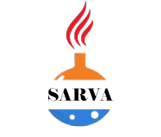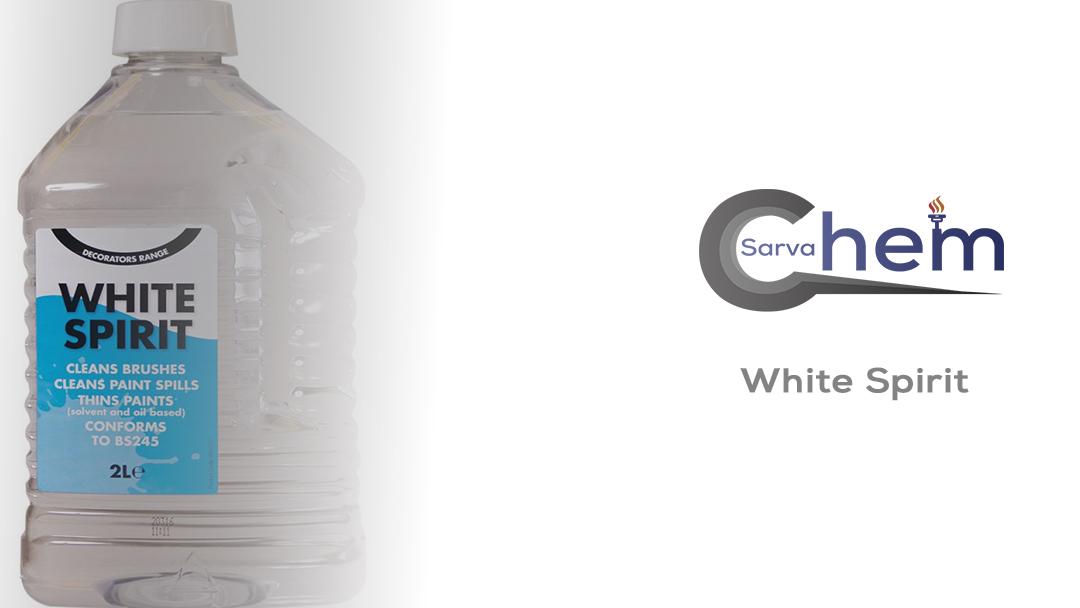White Spirit is produced as a fractional distillation from naphtha or kerosene.
It is used mainly as a solvent in the paint industry. White spirits manufactured by Sarva Chem or mineral spirits are mixtures of paraffins, cycloparaffins and aromatic hydrocarbons.
If you are eager to know more about this type of solvent, follow this article.
Process of White Spirit Production
The various types of white spirit are produced as distillation fractions from naphtha or kerosene components of crude petroleum. Kerosene distillation occurs due to different boiling point components.
It can produce three hydrocarbon fractions from kerosene distillation, the initial distillation fraction is known as zero white spirit.
This cut has about 20% or more aromatic composition in its structure. Hydrogenation processes can be used to produce solvents with less aromatic compounds.
Composition of White Spirit
What is white spirit made from? White spirit is made up of various liquid hydrocarbons, mainly aliphatic (paraffin) and also contain aromatic hydrocarbons (benzene, xylenes).
Saturated aliphatic and cyclic hydrocarbons constitute about 85% of the content of white spirit and aromatic hydrocarbons about 15% (by weight).
Nearly all the hydrocarbons are in the C7-C12 range. The chemical formula of white spirit should be based on
Types of White Spirits
White spirits manufactured by Sarva Chem are four types – Type 0 (high aromatic), Type 1 (hydrodesulfurization), Type 2 (low aromatic) and Type 3 (odorless). The composition of the various types of white spirit depends on the production process.
Type 0:
High aromatic white spirit is a complex combination of hydrocarbons obtained from the distillation of crude oil .
It consists of predominantly saturated hydrocarbons having carbon numbers in the range C9-C12 and a boiling point between approximately 140- 220°C.
Type 1:
This type of white spirit is obtained from type zero catalytic hydrodesulfurization process.
It consists of hydrocarbons having carbon numbers in the range C7-C12 and a boiling point between approximately 90-230°C ( Aromatics < 25%).
Type 2:
Low aromatic white spirit is a complex combination of hydrocarbons obtained from refinery processes.
This type contains aliphatic hydrocarbons in the range C7 to C12 and boiling point in the range of approximately 90 to 230°C (Aromatics< 5 %).
Type 3:
The fourth type of white spirit is a complex combination of hydrocarbons obtained by refining a petroleum fraction with hydrogen in the presence of a catalyst.
It consists of hydrocarbons having carbon numbers mainly in the range C6-C13 and a boiling point between approximately 65-230°C (Aromatics < 1%).
Grades of White Spirit
Also, for each type of white spirit there are three different grades. each grade is determined by the conditions of distillation:
– Low flash: in this grade the flash point is in the range of 21 to 30 Centigrade.
– Regular flash: in this grade the flash point is in the range of 31 to 54 Centigrade.
– High flash: in this grade the flash point is more than 54 Centigrade.
The grade is determined by the crude oil used as the starting material and the conditions of distillation.
Safety tips
white spirit manufactured by Sarva Chem can cause stomach poisoning and abdominal pain, and in severe cases, drowsiness, imbalance, heart problems, severe respiratory damage and coma. If liquid white spirit enters the lungs directly, it can cause severe lung damage. Inhalation may cause irritation of the nose, throat and lungs, shortness of breath, upset stomach, dizziness, headache, incoordination and drowsiness.
Skin contact with White Sprite irritates, dries and cracks the skin. Prolonged contact can even cause redness and eczema. Eye contact may cause immediate burning and tearing of the cornea.
In case of contact in any of the above cases, washing the area of contact with water for 20 minutes and in case of swallowing, giving water to the injured are appropriate initial proceedings that can be done before contacting medical centers.
Severe exposure to white spirit can lead to damage to the central nervation system, resulting in incoordination and slow reactions. Exposure to excessive concentrations of this substance in enclosed spaces can lead to side effects such as drowsiness, dizziness, nausea and eventually lead to anesthesia.
This solvent is very flammable and its flash point is between36-43. The vapors of this compound can form an explosive mixture with air that can be easily exploded by a flame or spark. Therefore, avoid storing it with oxidizing agents.
If this substance catches fire, extinguish it with substances such as water spray, dry chemicals, foam alcohol or carbon dioxide. The direct flow of water can scatter flames.
Application:
The most important and main application of white Sprite solvent is in paints and resins industry. Other applications of this material as cleaning solvent, solvent for aerosols, varnishes, washing solvents, asphalt products.
Paint industry
White Sprite manufactured by Sarva Chem is one of the most important solvents used in paints and thinners. This chemical can also be used as a paint thinner and due to its heavy composition, it has less volatility than similar materials. This feature increases the drying time of the paint and limits the use in areas with high humidity. This solvent has a lower price than hydrocarbon solvents, so to reduce the price of mixed thinners, it is added to the paint. The use of this chemical is also recommended for people who work long hours with paints due to its low odor.
Detergent industry
Manufacturers of laundry soaps use this solvent to remove grease and stains in their formulations, and laundry detergents are major consumers of this soap.
What to do if you are exposed to white spirit
Low-level exposure from the correct use of products that contain white spirit would not be expected to cause any adverse health effects.
Following accidental exposure to white spirit you should:
- remove yourself from the source of exposure
- if white spirit is ingested – seek medical advice. Do not make yourself sick
- if white spirit is inhaled – seek medical advice
- if you have got white spirit on your skin, remove soiled clothing (not above the head), wash the affected area with lukewarm water and soap for at least 10 to 15 minutes and seek medical advice
- if you have got white spirit in your eyes, remove contact lenses, irrigate the affected eye with lukewarm water for at least 10 to 15 minutes and seek medical advice.
How exposure to white spirit can affect your health
The presence of white spirit in the environment does not always lead to exposure. In order for it to cause any adverse health effects, you must come into contact with it. You may be exposed to white spirit by breathing or drinking the substance, or by skin contact. Following exposure to any chemical, the adverse health affects you may encounter depend on several factors, including the amount to which you are exposed (dose), the way you are exposed, the duration of exposure, the form of the chemical and if you were exposed to any other chemicals.
Ingestion of white spirit can cause stomach upset and abdominal pain. In severe cases, white spirit may be absorbed into the body causing drowsiness, lack of coordination, fitting, heart problems and coma. Severe lung damage called pneumonitis can occur if liquid white spirit is inhaled directly into the lungs, for example, from inhaling vomit after swallowing white spirit.
Breathing in white spirit vapors may cause irritation of the nose, throat and lungs, shortness of breath, stomach upset, dizziness, headache, lack of coordination and drowsiness. Exposure to very high concentrations via inhalation may cause symptoms similar to those seen following ingestion.
Skin contact with white spirit causes irritation, drying and cracking. Prolonged contact can cause redness, blistering and burns. Dermatitis can develop following repeated exposure. Eye exposure may cause an immediate stinging and burning sensation and tearing.




